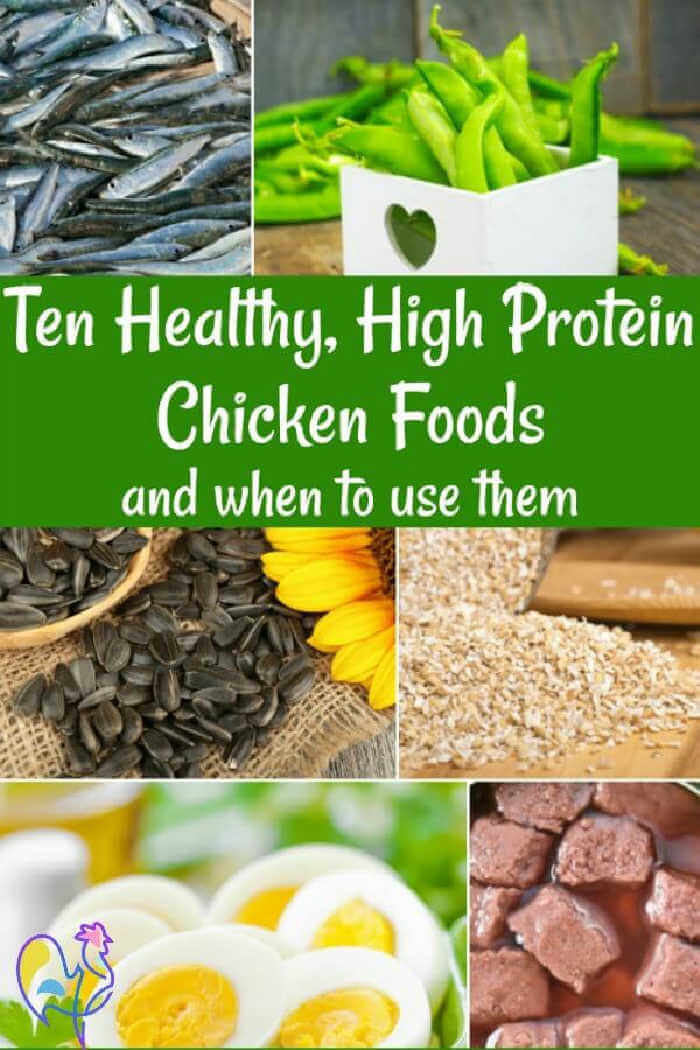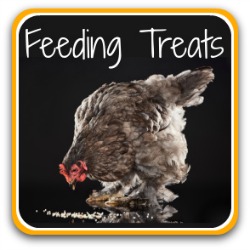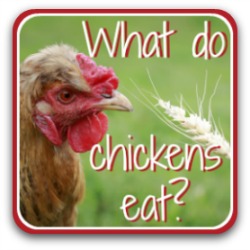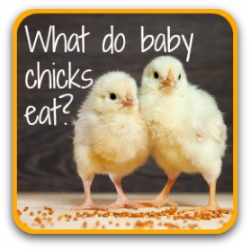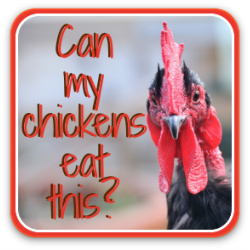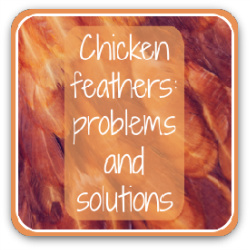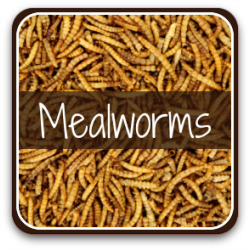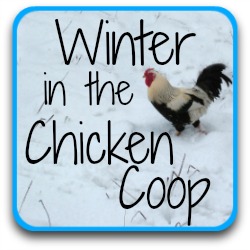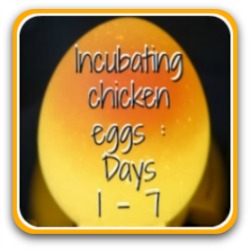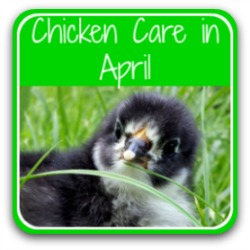Ten of the best high protein foods to see your chickens through hard times.
Do you worry about how your hens will cope with losing their feathers as autumn draws in? Or that they won't be able to deal with the winter cold?
Worry no more!
This is a list of high protein foods your chickens will love, which will see them through the times when they're in need of some help.
It's important to understand that chickens do not need a lot of high protein foods normally - in fact over-feeding protein can cause serious damage.
If you're giving your flock a good quality food, supplementing it shouldn't be necessary, particularly if they free range.
These foods should be given only when there is a specific need, and in great moderation at other times.
When do chickens need additional protein?
When they're moulting, during a hard winter, when they're under any other stress - for example if they've been subject to a predator attack - and for laying hens whose eggs you intend to use to hatch.
High protein foods during moulting.
Moulting starts as autumn sets in. Chickens need to grow a new set of feathers to make sure they're in the best possible condition to keep warm in the winter.
The new set pushes the old feathers out as they grow. Chickens can look anything from a little on the scraggy side to almost completely bald.
If you don't know what's happening, it can look very scary.
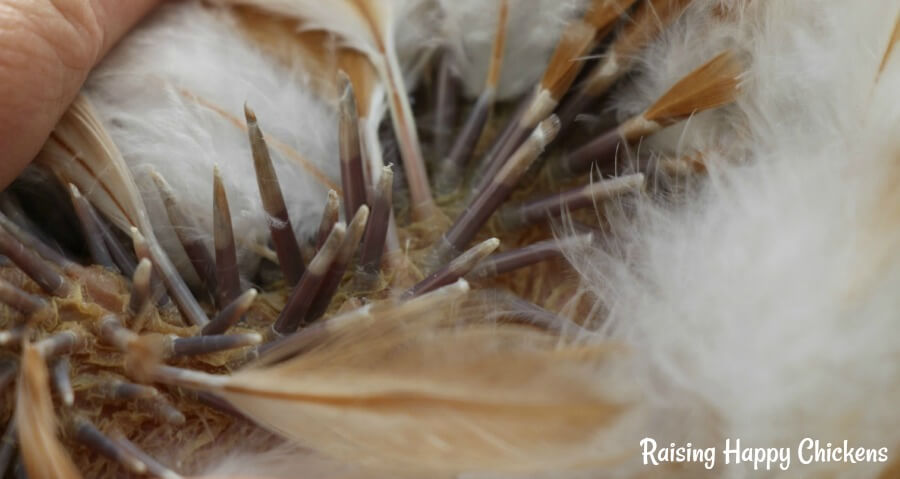 'Pin feathers' growing back on a moulting hen. At this point chickens need extra protein.
'Pin feathers' growing back on a moulting hen. At this point chickens need extra protein.Feathers are made up of between 85% and 90% protein, so the chicken puts all its protein resources into feather-making for the duration. Egg-laying will slow down or stop and the hen can become listless and tired.
The 'pin feathers' pushing through are also quite tender, so be careful how you handle a chicken at this stage.
Adding some extra protein into their diet at this time makes sense. It's like humans taking a vitamin supplement.
Want to know more about moulting? Find my detailed article, here.
Winter...
...can be hard on chickens. Here in Italy we often have six feet of snow on the ground for several weeks and the flock has to be confined to the coop to stop them sinking into snowdrifts.
They're not able to forage in the same way they do at other times of year so the usual high protein bugs, worms and frogs don't form part of their diet.
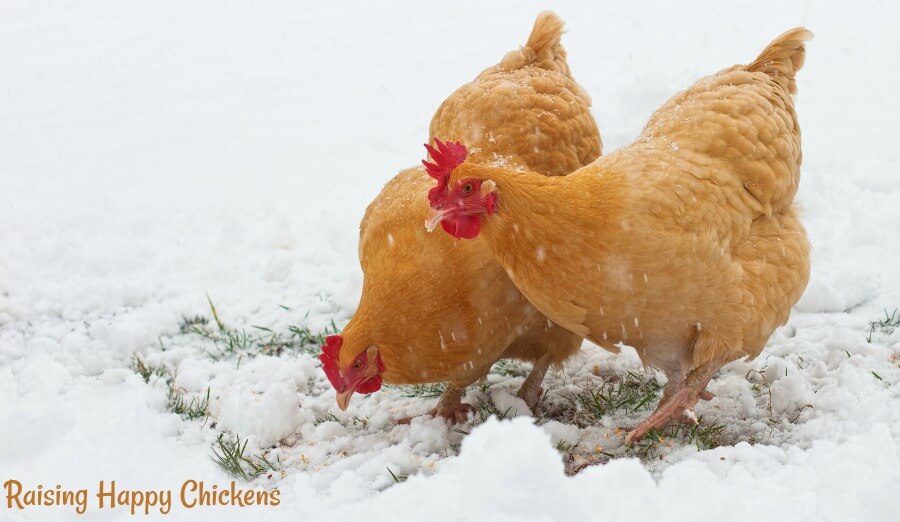
It's at those two specific times that chickens can do with a bit of help. And that's where a few high protein foods come into their own.
At other times of year it's fine to feed these foods occasionally, but only in very small quantities as treats.
We all like to 'spoil' our hens. But remember, there is such a thing as 'killing with kindness'. It's known that obesity is one of the major factors in 'Sudden Chicken Death Syndrome'.
How much high protein food is advisable for your chickens?
Use common sense. Many of them are very high in fat, and fat chickens are unhealthy. Aiim to give no more than a couple of handfuls between about 12 birds twice each week.
Having said that, some high protein foods, like lentil sprouts, are low in fat and fine to give as frequently as you want.
Where they should be used in great moderation I've made it clear under each heading.
Because this is a long and detailed page, use these jump links if you want information about a particular high protein treat.
1. Cooked eggs: 91% protein.
Eggs are the perfect whole food. I know it sounds weird feeding chickens their own eggs as a treat, but it works.
You should never feed them raw eggs, however, because it can lead to them deciding to have a little snack all on their own. The last thing you want is your lovely fresh eggs being eaten by your hens.
Raw eggs have less protein thank cooked anyway (about 51%).
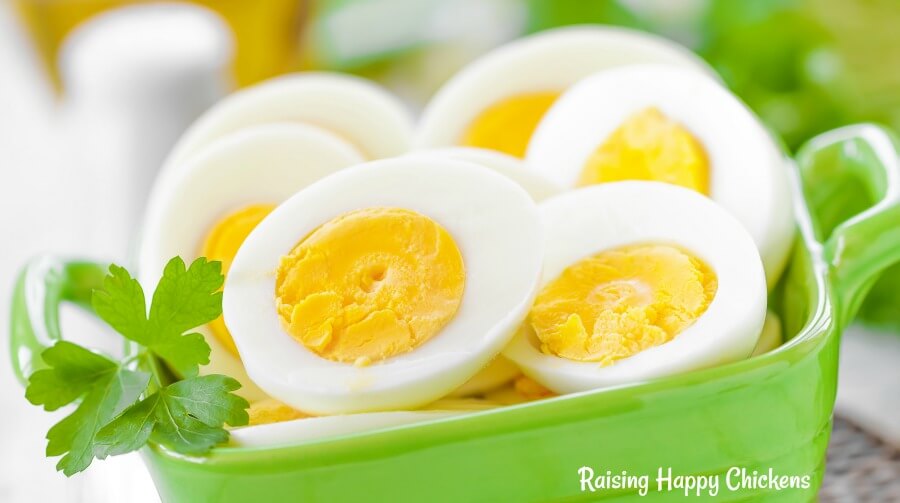
But cooked eggs are fine - chickens will not recognise them as eggs at all because the texture and smell are quite different. Mine prefer hard-boiled (chopped up for their convenience, naturally) and will be merciless with each other in their attempts to get at it first.
Scrambled eggs are also good but do not use milk to make them (water works just as well if you want to bulk them out a little) because chickens cannot digest milk properly.
And don't add any salt - chickens are not people. They don't need it in the quantities we use it.
Interesting factoid: The old concerns about eggs having too high levels of damaging cholesterol are now known not to be accurate.
For more information about the nutritional value of eggs, have a look at this page, and take a look here to see which plant is proven to lower the cholesterol content of eggs.
2. Fish, or fish meal: 61 - 72% protein.
Sardines or tuna are particularly good because of their high levels of Omega 3 (unsaturated fat) oils, but any oily fish is excellent.
I personally use fresh sardines which I'm lucky enough to be able to buy very inexpensively. I feed them raw and either mash them or just slit them open. Once open, chickens will devour them within a matter of minutes - entrails and all.
For more detail about whether and how much chickens can eat fish, and a simple recipe, see this page.
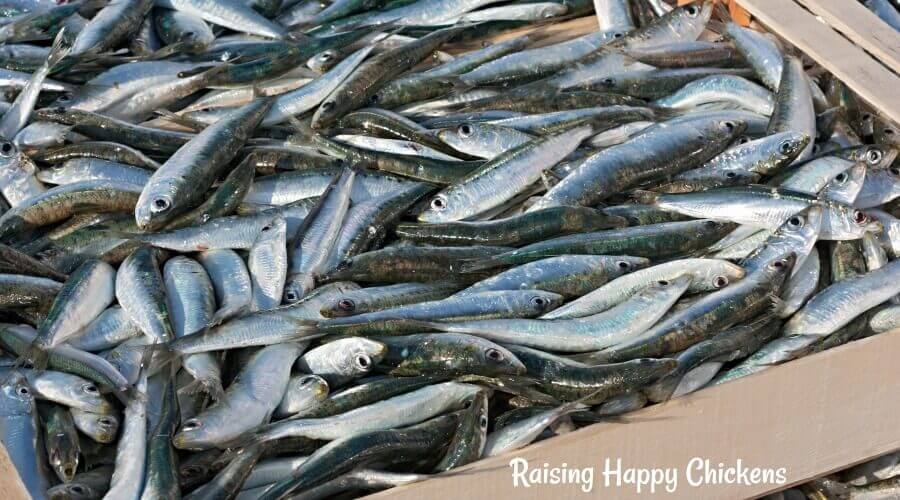
Don't worry about the bones - they'll eat the very tiny ones but larger bones will be left intact. If you feed something like a whole herring or mackerel you'll find all that's left will be the head and skeleton. They pick the rest clean.
Fish can also be useful in hot weather - I freeze some large chunks and give them to the hens as a very occasional summer treat.
If you can't get fresh fish, tinned is fine. Use fish in water or sunflower oil with no additives - in particular no salt.
Fish meal is another option and can be bought online. It's processed, of course, and has added chemicals to stabilise it and prevent decomposition so I prefer not to use it - but it's a high protein option if you can't get fresh.
Interesting factoid: Many people won't give their chickens fish in case it taints the eggs.
In fact, there's no evidence that it changes the taste of eggs even when poultry is fed quite large amounts of fish in their diet.
3. Mealworms: 49% protein live, around 36% dried.
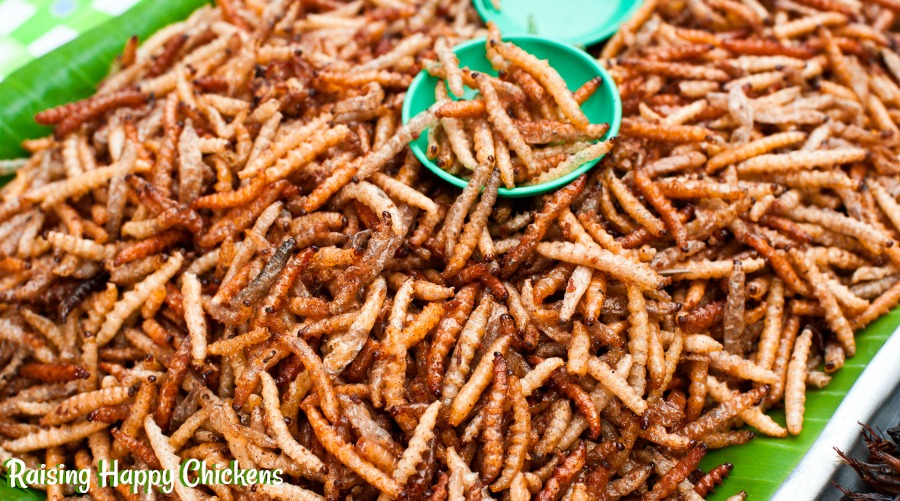
I know - ugh. But if my chickens go crazy for cooked eggs, they will positively kill for mealworms.
I have a detailed article about mealworms, here.
Scattered around the run they are an excellent way of encouraging your flock to scratch and forage. Added into a nice mushy chicken porridge or a pumpkin treat recipe, they are a crunchy treat your flock will love.
Don't overdo them though. Give no more than a few per chicken a couple of times a week.
How to breed mealworms.
I haven't been able to bring myself to do this yet (too squeamish) but if you want to give it a try, this is the most helpful series of videos I've been able to find which leads you through the whole process step by step.
Interesting factoid: scientists are currently advocating using mealworms for human food because they're easy and inexpensive to raise, and an excellent source of protein and fat.
They haven't quite caught on for people though - yet.
4. Pumpkin seeds: 31 - 33% protein.
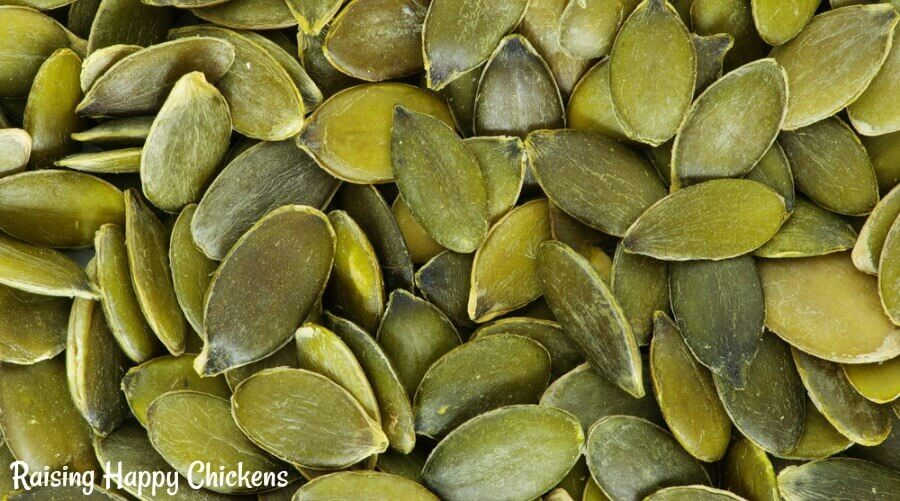
Everyone loves the time in the autumn (Fall) when leaves are starting to turn and pumpkins can be found everywhere.
And as it so happens, the insides of all those pumpkins you and your family will be carving out for Hallowe'en can be put to good use - not just making pumpkin soup but to offer your flock one of the best high protein foods around.
Use the fresh seeds, not the packaged ones which are generally high in salt. They do tend to lose their freshness and some of the nutritional value after a couple of months, so don't try stockpiling them, either.
You can either give them to your chickens exactly as they come out of the pumpkin (chickens also love the flesh of pumpkins) or lightly roast them.
To make it even better, they're also a great source of anti-oxidants which may help your hens fight off illness.
Don't rely on them as a de-wormer though - you'll see a lot of advice around the internet saying they're effective for this, but there is no scientific evidence of it anywhere.
Interesting factoid: The Maya and Aztecs used pumpkin seeds as far back as 1300 A.D. for their medicinal properties, and pumpkin seed oil is widely used still in Mexican dishes as an inexpensive protein source.
5. Lentils: 26 - 30% protein.
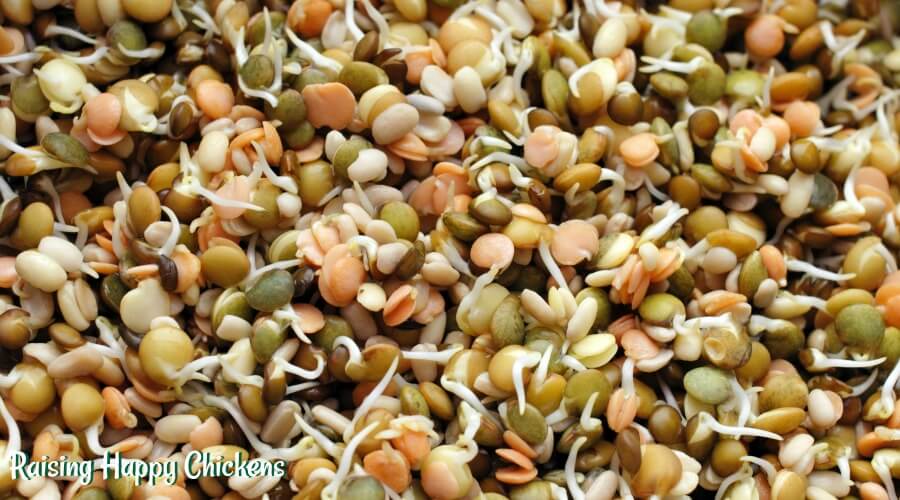
These are one of my all-time favourite treats for my flock, and I use them all year round. As well as being one of the best high protein foods available, lentils are also very low in fat.
Inexpensive and very easy to make, my chickens don't love them as much as some other treats, but they'll eat them nevertheless.
Want to know how to make them? Take a look at my article about how to sprout. You can use other sprouts as well but I've always found lentils the most successful.
Alternatively, this article contains details of the health benefits of lentils and a warm lentil-based treat recipe to use during cold winter months.
Interesting factoid: Use them yourself in salads throughout the year. They're excellent nutrition for humans too, and their peppery taste really does add an extra dimension.
6. Cat food: 26 - 30% protein.
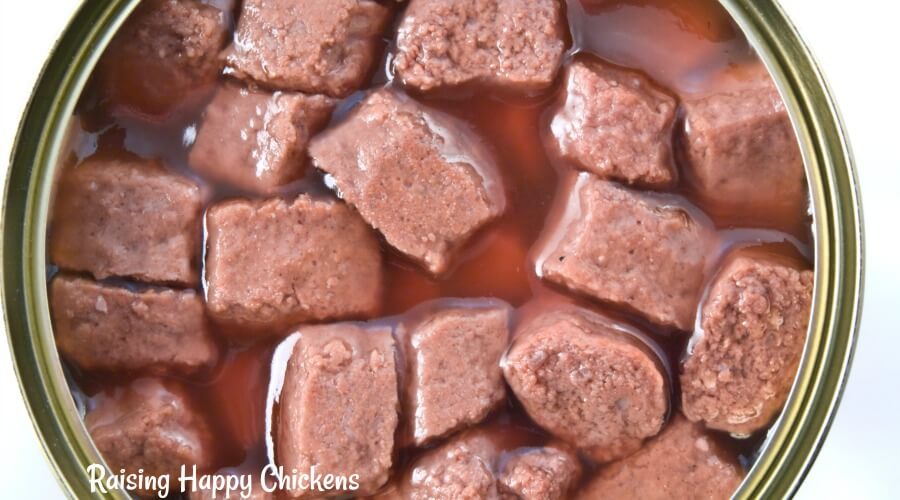
Anyone who has ever watched chickens fighting over a lizard or frog knows that they are definitely not vegetarians. They're omnivores - they eat both animal and plant life. And they adore meat.
Cat and dog food - either dry kibble or tinned meat - is a controversial food for chickens. Some people swear by it; others say it should never go near a chicken coop.
Like all the other high protein foods it should certainly not be given regularly, if at all. See this article to find out why.
There's no doubt at all in the minds of my chickens though: they adore it.
Interesting factoid: chickens will take on even quite large cats if they think they can get to their food.
We once tried to entice some feral cats to live in our yard but they didn't stay - the chickens left them no food!
7. Sunflower seeds: 26% protein.

Very high in protein and always available fresh in the autumn, sunflower seeds are also very high in disease-fighting phytochemicals. Perfect.
Here in Italy they are harvested only when the heads are void of petals, drooping and the seeds have turned black which is when they are at the height of their nutritional value.
It's a sad sight, but a great natural food.
Scatter them dried in your run, use them in a treat block or, best of all, plant sunflower seeds in the spring and let your flock help themselves to the heads when they're ripe.
Gorgeous colour all summer, nutrition in the winter. Wonderful.
Interesting factoid: the tallest recorded sunflower measured 27 feet from top to toe and was grown in Germany. A bit too tall for chickens to reach!
For details about how to grow, harvest and feed sunflower seeds to your chickens, see my detailed article, here.
Bonus tip: did you know other common plants are also good sources of nutrients for chickens?
Watch this short video to find out which are particularly beneficial for their health.
8. Garden peas: 23% protein.
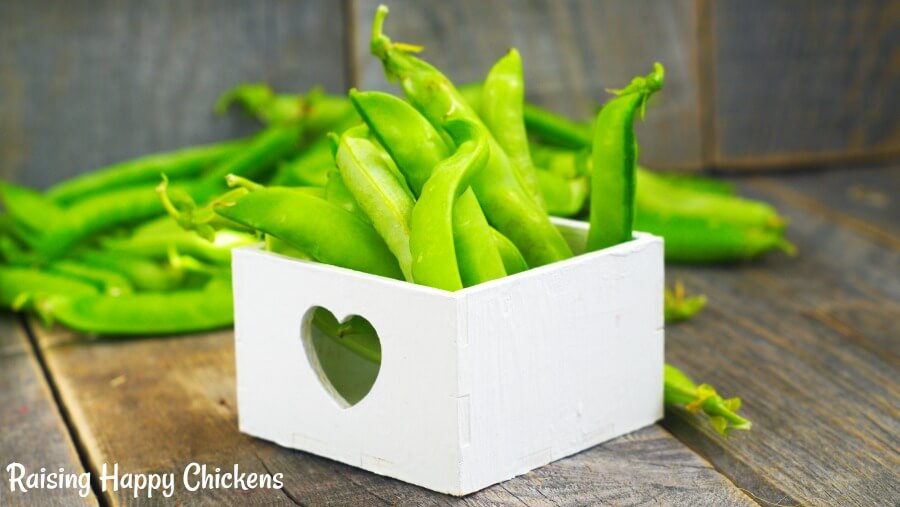
Peas have been fed to poultry for generations, either those classed as "not fit for human consumption" due to being mis-shapen or too small, or those strains grown especially for animal fodder.
Easy to grow, they can be fed mixed with other veggies, or combined into a treat block.
If you don't have the space available to grow them yourself, don't use canned processed peas which are high in sugar, salt and additives.
Frozen peas are good to use. They're frozen so quickly that they may actually have more nutrients than those sold as 'fresh' in supermarkets.
Interesting factoid: Three quarters of a cup of ordinary garden peas has more protein than a tablespoon of peanut butter and none of the fat.
Feed your chickens peas as treats, not peanut butter!
9. Parsley: 21% protein.
Parsley is such an effective immune-booster for chickens that I have a separate article outlining its benefits.

Used often as a garnish or a flavouring for sauces, parsley tends not really to be considered as a herb full of protein and essential vitamins and minerals - but it is.
You'll see some information on websites claiming it's poisonous to chickens. The evidence is exactly the opposite.
The Italian flat-leaved strain in particular is a good source of calcium and anti-carcinogens as well as protein. As an added bonus, it's very low in fat.
Parsley is immensely easy to grow both outside or on a sunny window ledge. My chickens demolish it, particularly when it's mixed into other high protein goodies.
Interesting factoid: there's an old English superstition that transplanting a parsley plant beings bad luck, so be sure to plant yours where you want it to stay!
10. Oats: 10 - 17% protein.

I'm including oats here because, although not as high in protein as other foods, they are very convenient when used in different recipes to add bulk and bind together different ingredients.
As well as protein they have calcium, iron and soluble fibre. Chickens won't eat a lot of them but as part of a good, balanced diet they're indispensable.
Avoid the 'quick' variety which are processed and therefore have less nutrients and more sugar and salt. Go for whole oats and, if possible, organic.
Try soaking oats in water before feeding them to your chickens - it makes them easier to ingest and it's a good way of making sure they're keep hydrated either during the hot summer months or in the winter, when water may freeze over.
I'll serve oats either on their own or with some left-over veggies added. My flock absolutely love their "porridge"!
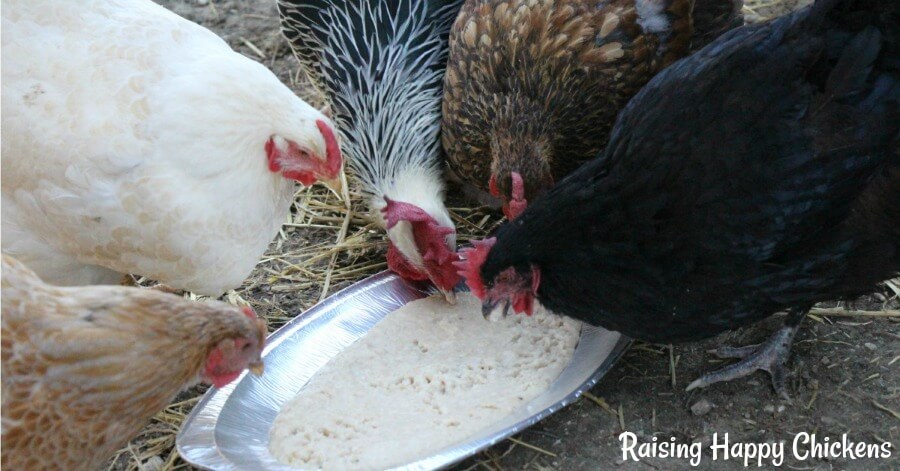 My flock adore the taste of "porridge" on a cold winter's morning.
My flock adore the taste of "porridge" on a cold winter's morning.Interesting factoid: you may find, if you feed oats to your chickens, that they seem to become calmer and less jumpy.
That's because the high fibre content makes them feel full - the same kind of feeling humans get after a large Christmas dinner!
What about commercially produced high protein food?
Links in this section are "affiliate links", which means that if you click and buy something, I earn a small commission at no extra cost to you.
If you feel you don't have the time to grow or make high protein feed for your chickens you can always buy the powder version as a booster to their normal feed.
However, be aware that at around 29%, the level of protein is not as high as many of these natural foods.
It is also high in corn, which is low in nutrients, and has added chemicals to extend its shelf-life. I don't use it because I prefer to feed naturally wherever possible.
Having said that, a lot of people swear by it and hens apparently love it.
Remember: just like natural high protein treats, your chickens need this commercially produced food only when their natural protein levels are depleted.
Do not feed it as a matter of course.
And finally - remember ...
- These high protein foods are not to be fed as a substitute for a good quality chicken feed, but as an occasional treat.
- Do be careful not to overfeed and do not give these treats as a matter of course all year round. Restrict them to moulting and hard winters. Overweight chickens will develop various health problems and won't be good egg layers.
- You still need to supply oyster shell, grit and water.
- Remember that hens are creatures of habit. New foods will be eyed with great suspicion at first, until your flock decides those strange looking fish pieces or mealworms aren't going to kill them after all!
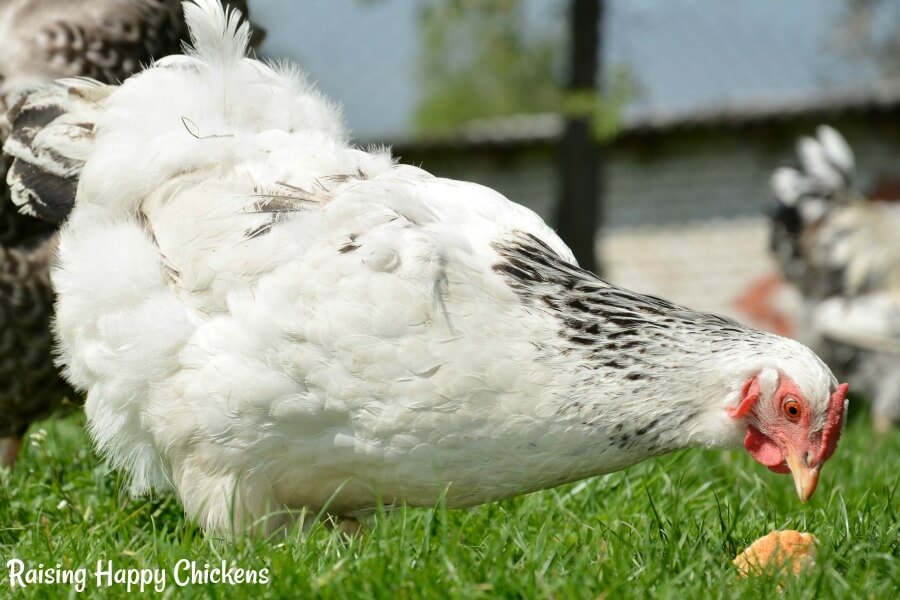 "Will it kill me?" Give your chickens time to get used to new high protein foods.
"Will it kill me?" Give your chickens time to get used to new high protein foods.For a wider selection of high protein treats, try these!
Want to learn more about food for chickens? Click any of the pics!
Sources.
A lot of "facts" you'll find on the internet are often people's individual views, based on inaccurate information repeated from poor quality sources.
The information I provide in this article and others is based not just on my own experience, but on evidenced facts from scientific, peer-reviewed research and books from highly respected and experienced poultry keepers such as Gail Damerow.
Some of the trusted sources I have used in this article are these.
Health Canada : 'Nutrient Value of some Common Foods'. March 2013.
Mayo Clinic : 'The Calorie and Protein Content of Common Foods'. 2012.
Mealworm.org : 'Mealworms - Recipes and Nutrition'. 2014.
National Academy Press : 'The Nutritional Requirements of Poultry'. 1994.
National Sunflower Association.
R. Hoenselaar; Pub. National Centre for Biotechnology Information, US National Library of Medicine : 'Saturated fat and cardiovascular disease: the discrepancy between the scientific literature and dietary advice'. August 2011.
European Feed Regulations.
Please note: I am required to tell you that currently in Europe, including the UK, regulations state that chickens should not be fed any foods which have been in a kitchen, whether the kitchen is a professional or a domestic one.
This includes meats, vegetables and
any kitchen scraps and it applies to all backyard chickens, however large or small the flock, and whether or not
you sell their eggs or meat to others.
Furthermore, the sale of dried mealworms for consumption by chickens is also illegal, although you will still find the product available, labelled 'for birds'.
This is related to concerns about the transmission of disease, and mealworms being imported from countries where quality control is poor.
